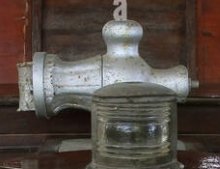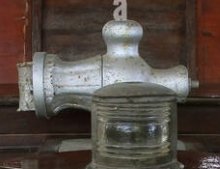-
Posts
1,188 -
Joined
-
Last visited
Content Type
Profiles
Forums
Gallery
Events
Everything posted by CPDDET
-
Welcome aboard!
-
Welcome aboard! Im building a 1/18 scale for the same reason. Bonus is that small details are much easier!
-
Welcome!
-

Good 'Hobby Quality' Metal Lathes
CPDDET replied to tmj's topic in Modeling tools and Workshop Equipment
Sherline was my choice because of quality build, customer support and full range of accessories. -
Welcome aboard!
-

The latest to begin the Model Shipways 3 kit set
CPDDET replied to Taken Aback's topic in New member Introductions
Press on! -

Getting Started: From Dollhouses to the USS Constitution
CPDDET replied to Jasennord's topic in New member Introductions
After finishing the 3 model starter kits you might want to consider completing the NRG Half Hull kit. It will teach you correct hull planking. This is an area that stumps many first time builders. The kit will explain spiling, the way ships hulls were actually planked. Mix this technique with edge bending (an alternate method) and you will be well on your way. -

Getting Started: From Dollhouses to the USS Constitution
CPDDET replied to Jasennord's topic in New member Introductions
Welcome! -

The latest to begin the Model Shipways 3 kit set
CPDDET replied to Taken Aback's topic in New member Introductions
Welcome aboard! You're starting the right way. -
Welcome aboard
-
Welcome aboard!
-

Metallic paint questions....
CPDDET replied to CPDDET's topic in Painting, finishing and weathering products and techniques
So my plan right now is to use Alclad Polished Brass over Alclad Gloss Black Base on the prop shaft support to match, as close as possible, the brass prop and shaft. I want to use Alclad Dull Aluminum for the anchor windlass, running light housings and vents but not sure what to use for a base coat. Any advice? -

Metallic paint questions....
CPDDET replied to CPDDET's topic in Painting, finishing and weathering products and techniques
-

Metallic paint questions....
CPDDET replied to CPDDET's topic in Painting, finishing and weathering products and techniques
Beautiful work there! -

Metallic paint questions....
CPDDET replied to CPDDET's topic in Painting, finishing and weathering products and techniques
Brand? -
Have several smaller parts for my current build that were made by 3D printing. Would like to paint these to look like metal (brass, bronze, chrome, aluminum etc.) I've heard that Velliajo makes a good product but is difficult to work with. Also have seen paint pens for this purpose. Asking for advice on a good product and process.
-
Welcome to the group! I had a 30 foot sloop when I was a younger. Had a great time sailing her.
-
Welcome aboard. I hope your problem finds a solution.
About us
Modelshipworld - Advancing Ship Modeling through Research
SSL Secured
Your security is important for us so this Website is SSL-Secured
NRG Mailing Address
Nautical Research Guild
237 South Lincoln Street
Westmont IL, 60559-1917
Model Ship World ® and the MSW logo are Registered Trademarks, and belong to the Nautical Research Guild (United States Patent and Trademark Office: No. 6,929,264 & No. 6,929,274, registered Dec. 20, 2022)
Helpful Links
About the NRG
If you enjoy building ship models that are historically accurate as well as beautiful, then The Nautical Research Guild (NRG) is just right for you.
The Guild is a non-profit educational organization whose mission is to “Advance Ship Modeling Through Research”. We provide support to our members in their efforts to raise the quality of their model ships.
The Nautical Research Guild has published our world-renowned quarterly magazine, The Nautical Research Journal, since 1955. The pages of the Journal are full of articles by accomplished ship modelers who show you how they create those exquisite details on their models, and by maritime historians who show you the correct details to build. The Journal is available in both print and digital editions. Go to the NRG web site (www.thenrg.org) to download a complimentary digital copy of the Journal. The NRG also publishes plan sets, books and compilations of back issues of the Journal and the former Ships in Scale and Model Ship Builder magazines.






